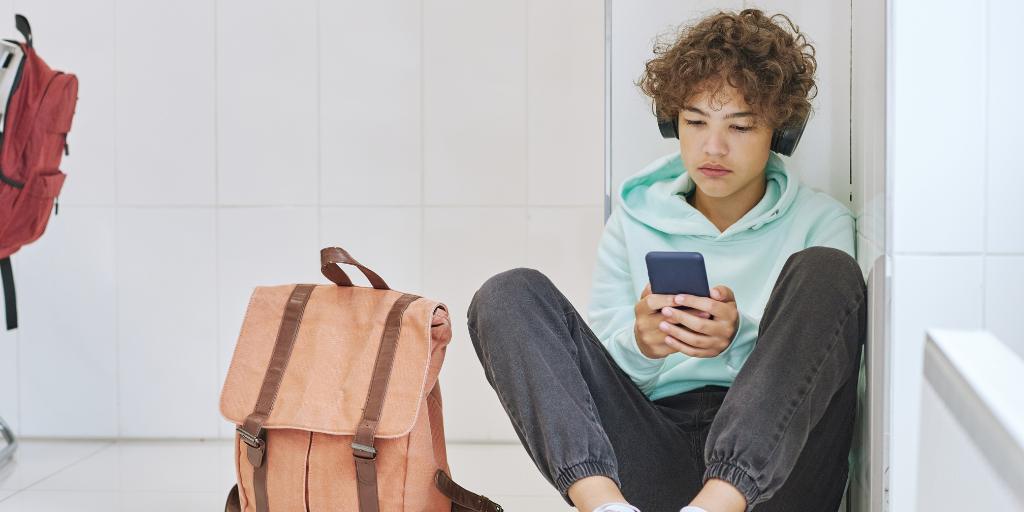
Snapchat and Instagram are two of the most popular social media apps for kids, but which one is safer? Neither platform is entirely risk-free, but Instagram offers more built-in parental controls and content restrictions for teens. Snapchat’s disappearing messages and real-time location tracking poses greater privacy concerns. However, both apps have risks, and safety depends on how they are used and monitored by parents. Let’s break it down.
| Feature | Snapchat | |
| Age requirement | 13+ | 13+ |
| Parental controls | Private teen accounts, messaging and content restrictions | Stronger for teens: private accounts and restrictions, plus time limits & sleep mode |
| Messages | Disappearing messages | Direct messages remain visible by default, but vanish mode can be enabled |
| Location tracking | Shares real-time location when enabled (off by default on teen accounts) | Location sharing optional |
| Cyberbullying risks | High (disappearing messages, private groups) | High (DMs, public comments) |
| Content risks | Explicit content in Snap Stories, Spotlight | Explicit content in Explore & Reels |
| Safety verdict | Higher risk due to disappearing content & Public Profiles for older teens | Safer due to stronger built-in teen protections & content moderation |
Snapchat is a social media app where users can share messages, pictures (known as Snaps) and videos. Snaps are designed to disappear after 24 hours, and messages vanish after they’ve been read.
Users are rewarded with Snapstreaks for being active on the app. The more they engage with their friends, the higher their streaks will go. Snap Scores represent how active the user is on the app. Snapchat’s Spotlight section is a collection of content from users, businesses, and creators outside of your child’s friend group.
Instagram is a feed-based social media platform designed for sharing photos and videos. Unlike the fleeting nature of Snapchat, Instagram posts are meant to last. This encourages users to carefully curate their feeds and creates an emphasis on sleek, polished images.
Instagram Stories are similar to Snapchat in that they disappear after 24 hours and therefore tend to be more off-the-cuff and less edited. Users can also use Instagram’s Explore feature to find new posts about special interests from people they don’t yet follow.
👻 Worried about your child’s activity on Snapchat and Instagram? BrightCanary gives you the best parental monitoring for Apple devices. Start your free trial today and keep them safer online. Download BrightCanary now.
Both Instagram and Snapchat have some built-in protections. While neither are foolproof, they are important tools you can utilize to help keep your child safe on the apps.
The Snapchat Family Center includes a suite of parental controls that give you insight into your child’s activity on the app and lets you set restrictions on how they use the app.
With Snapchat Family Center, parents can:
Snapchat recently updated privacy settings for teen accounts. Here are the default privacy settings for users aged 13–17:
These privacy settings are a significant upgrade, but they only apply if your child signs up with their correct birthdate. It’s also possible that your child might accept a friend request from someone they don’t know, which is why it’s important to keep an active eye on the people they speak with regularly.
Instagram recently introduced Teen Accounts, which feature additional safety measures that are automatically turned on for underage users. Here’s what’s included:
For more tips on keeping your child safe on Instagram, check out our Parent’s Guide to Instagram.
Although the landscape has gotten a bit safer for kids on Instagram and Snapchat as the platforms have taken steps to address concerns, plenty of risks remain.
Regardless of what social media platforms you let your child use, it’s vital to take the following measures to keep them safe:
For Snapchat:
For Instagram:
Here’s the most important step: Talk to your child about the dangers and how they can stay safe online, and practice regular safety check-ins once they start using devices independently.
Because both Instagram and Snapchat present risks to kids (and have at least some protections parents can put in place), neither is inherently safer than the other. It comes down to how your child uses the platform and how involved you are in their online activity.
BrightCanary can help you keep your child safe on Instagram and Snapchat. You’ll be able to monitor Instagram content, including DMs, and most chats and images your child sends and receives on Snapchat (currently in beta mode). Download BrightCanary today to get started for free.